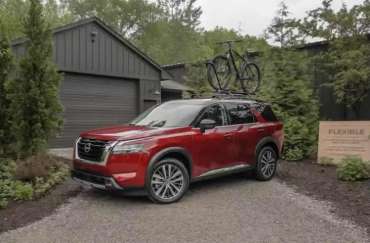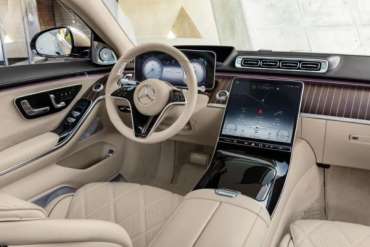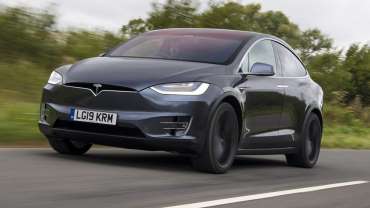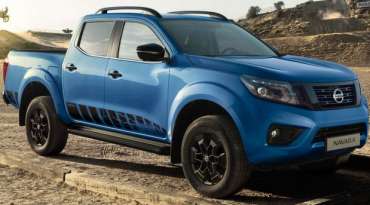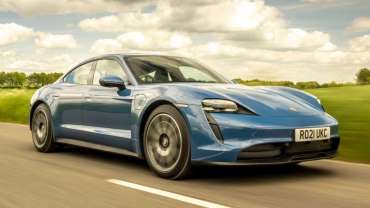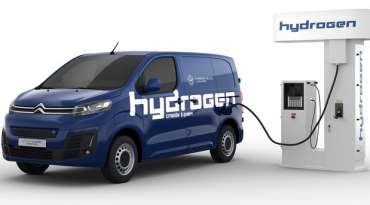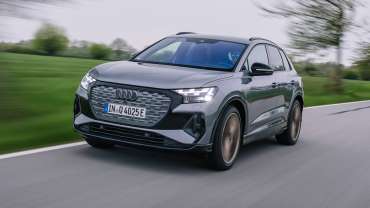
Worldcarblog.com
2022 Nissan Pathfinder Review: Outdoor Adventure Wagon Rebooted
When SUVs first arrived on the American scene, they were purpose-built, off-road adventure and utility vehicles. They weren’t luxurious and they weren’t comfortable; they were work wagons used by forest rangers and farmers. Somewhere along the way, they became eight-seat family vehicles, replacing the station wagon and minivan in most driveways. But the trend we’ve spotted for the 2020s seems to be an effort by automakers to recapture some semblance of that off-road adventurism after decades of moving toward making them glorified tall wagons.
The latest automaker to do that is Nissan, which has redesigned the latest 2022 Pathfinder three-row to be more rugged, more outdoorsy and slightly more capable in the dirt than its solidly street-oriented predecessor without giving up any of the luxury, safety and connectivity that modern families expect in an SUV. I drove the new ’22 Pathfinder through Southeast Michigan recently to see if Nissan’s moves to butch up the new Pathfinder have paid off.
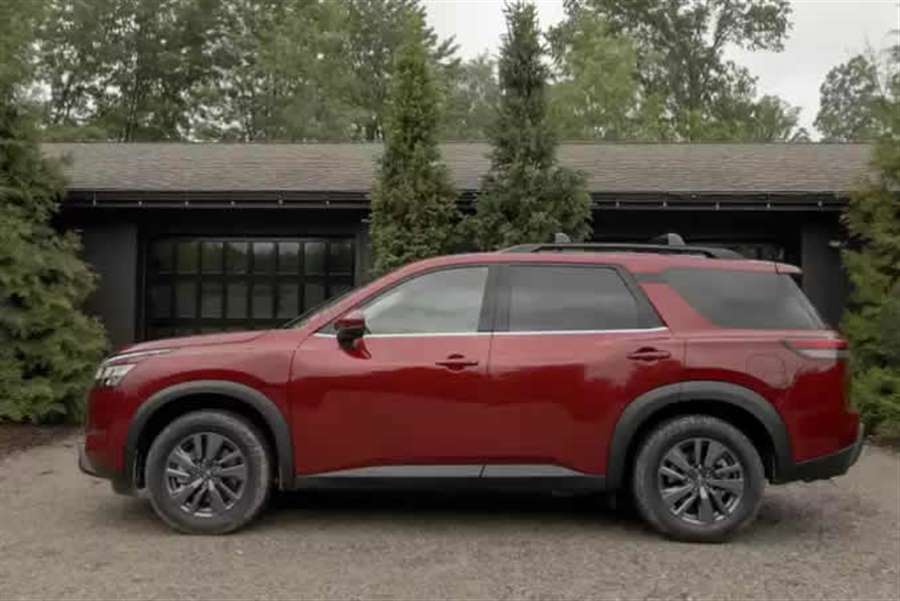
The Family Resemblance Is Strong
The fourth-generation Pathfinder was a generic blob-shaped thing that bore no family resemblance to the chunky original 1986 model at all. This new fifth-generation model is a complete departure that incorporates some styling cues from the original Pathfinder, such as the forward-swept C-pillar, three-slot grille and overall squared-off, thick body styling. It’s actually a little shorter than the outgoing model, but changes its proportions by being taller and wider.
I have to say it looks much, much better than the last Pathfinder, with definite family resemblance to the latest angular Nissans like the larger Armada and smaller Rogue. The slim headlights taper into the wide and prominent fenders, with the taillights stretching across the rear to again emphasize the Pathfinder’s width. Its geometric looks make the new Pathfinder feel like a larger vehicle than the one it’s replacing, but the overall dimensions don’t change all that much. Suffice it to say, it both looks and feels big — this was not an effort to slim down the SUV, this was an effort to make it look more rugged and aggressive, and it worked well.
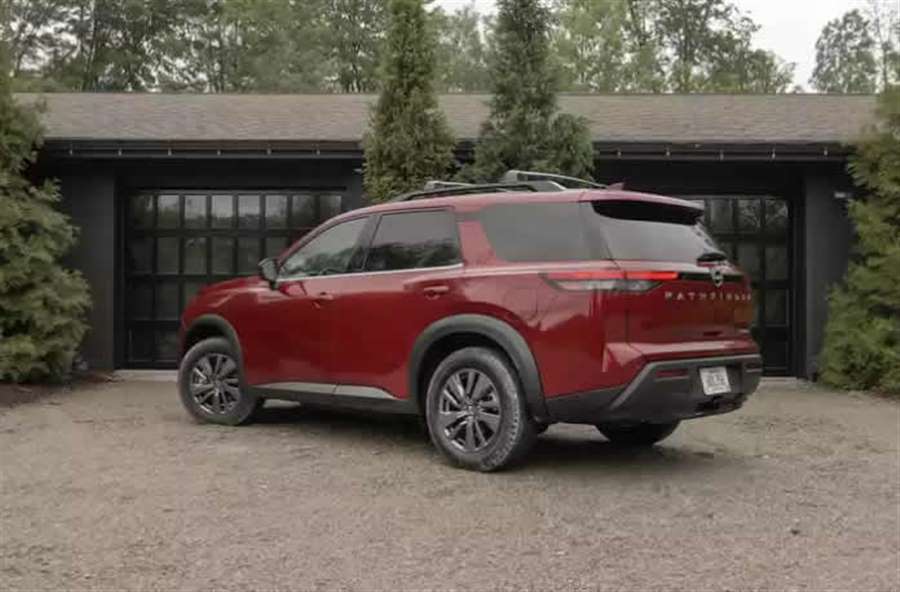
It Expects You to Drive Like the Family’s in There
Powering the 2022 Pathfinder is the same 3.5-liter V-6 that’s in the outgoing model — it makes 284 horsepower and 259 pounds-feet of torque, which is unchanged from the previous Pathfinder. What’s new is what that engine is connected to: a conventional nine-speed automatic transmission, replacing the unloved continuously variable automatic transmission in the old Pathfinder. That change is meant to improve the Pathfinder’s off-road ability, its towing durability, its driving dynamics and more — and in most ways, it delivers. It doesn’t sacrifice gas mileage, which is up 1 mpg combined in AWD versions over the 2020 model (the last model year sold). Lower trim levels increased from an EPA-estimated 22 mpg to 23 mpg, and the AWD Platinum is up from 21 to 22 mpg. The combined rating remains 23 mpg for front-drive Pathfinders, but the city/highway distribution has changed slightly to 21/27 mpg city/highway.
Driving the new Pathfinder is best done at a relaxed pace, as if the whole family is on board for a ride and you don’t want kids dropping juice boxes or Grandma to stress any joints. With moderate acceleration, the V-6 is perfectly adequate, the new nine-speed auto-shifts smoothly and calmly, and the whole experience is that of a big, heavy SUV doing what it does best: ferrying the brood to soccer practice or the mall in quiet comfort. The transmission does hunt a lot for its gears, but with nine speeds to play with, this is to be expected — only occasionally does it feel like it’s missing the beat and not keeping up with the driver’s anticipated moves. For example, when coasting down to a stop but then deciding to give it some more power as traffic has cleared from a light, it gets a little confused and might select a gear lower than it needs to. But overall, the powertrain is smooth, refined and perfectly adequate to the task of powering the Pathfinder.
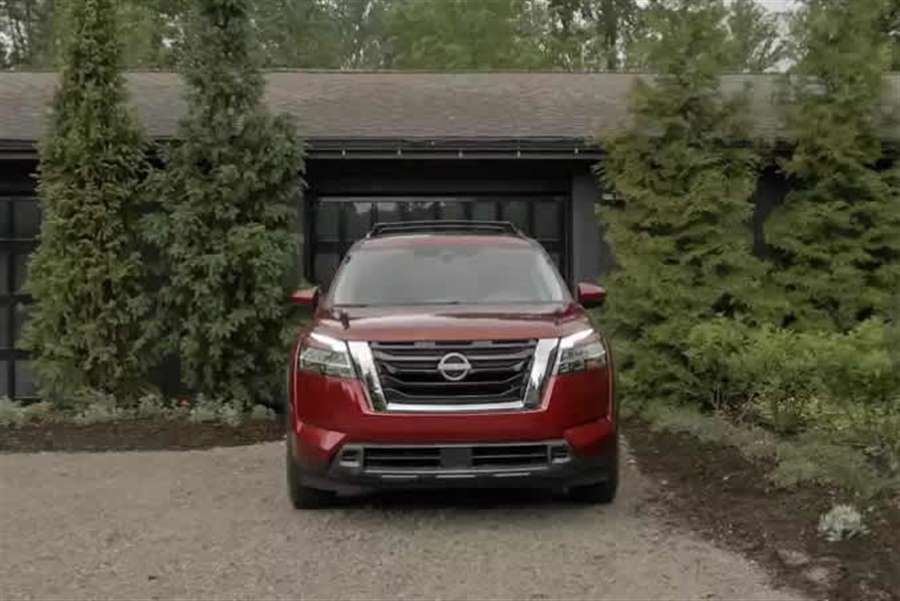
The Pathfinder’s overall feel is of a heavy SUV, however, especially when negotiating tight turns and roundabouts or performing hard acceleration and braking maneuvers. Body movement is pronounced in such situations, squatting hard on its rear haunches under full acceleration, diving noticeably under hard braking and plowing through quick turns with considerable understeer. It doesn’t like being hustled along quickly, lacking the athletic feel that a Ford Explorer has with its tightly controlled body motions and punchy turbocharged engines. Slipping the drive mode selector into Sport mode does improve steering feel and feedback, but it becomes clear to the driver that this is the equivalent of a family minivan, not a sports wagon, and that you (and your passengers) are going to be happiest keeping the Pathfinder at a simmer rather than a full steaming boil.
Comfort and Style Aplenty
But the Pathfinder will happily simmer along all day, with a truly comfortable ride even on high-spec models that have big wheels and low-profile tires. Road noise does make it into the cabin, again thanks to those big wheels and tires, and it’s made even more noticeable by the lack of wind noise to mask it. But the overall serenity of the Pathfinder’s completely redesigned cabin is barely affected by the outside world. The new look inside is excellent, with a modern feel and updated electronics that combine with solid material choices and build quality to create a well-updated cabin.
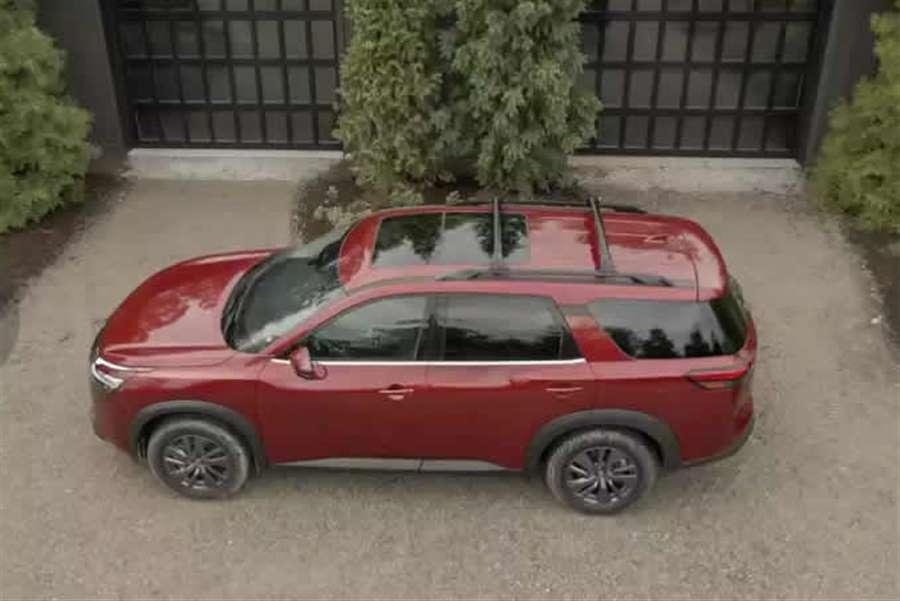
Seat comfort is good, but we’re still not seeing the “magic” of the so-called Zero Gravity Seats. They just feel like seats — no better or worse than any others, really (except, perhaps, for the aforementioned Explorer, which has seat bottoms that feel too short). There’s noticeably plentiful passenger space, however, with tons of room up front or in the sliding second row, both for width and legroom. The third row in many three-row SUVs is often best used only for children, with a few notable exceptions (like the Volkswagen Atlas and Hyundai Palisade). The additional width that comes with the new 2022 Pathfinder makes the third row here a usable size for adults, as well, especially given the second row’s sliding ability, allowing for passengers in the second and third rows to negotiate available legroom among themselves. Third-row ingress and egress is easy, too, thanks to Nissan’s one-touch EZ Flex Latch and Glide button that slides and tilts the second row, even with child-safety seats attached.
The updated interior electronics are welcome, with an available 9.0-inch touchscreen multimedia system that’s located high on the dash for easy visibility and use. It’s accompanied by an available 12.3-inch digital gauge cluster that provides all sorts of information, some more useful than others, and two different configurations that look slick. There’s also an available 10.8-inch head-up display that puts all the relevant information up in the driver’s sight line but features an oddly offset speedometer readout. Still, everything is clear and easy to read, and after some experimentation with configurations and settings, you’re sure to find a setup that provides all the information you want without having to hunt through menus. As with most new vehicles these days, Apple CarPlay and Android Auto come standard, and Wi-Fi connectivity with wireless charging is available.
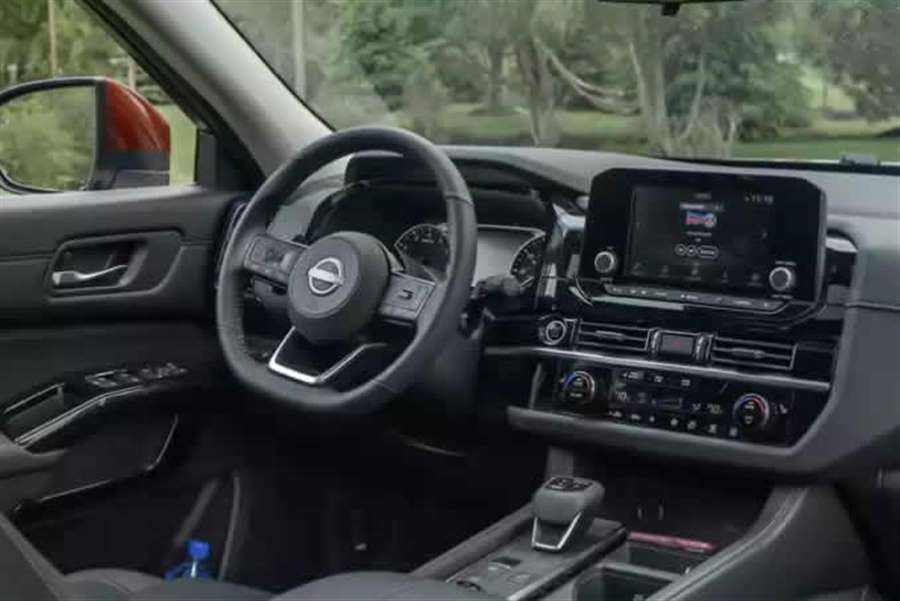
About That Ruggedness …
Nissan felt it important to demonstrate that the new Pathfinder is a capable off-roader, as the changes made to amp up its rugged image are more than just cosmetic. That’s why the company booked some time at Holly Oaks ORV Park north of Detroit for a brief romp through the dirt and mud to show off the Pathfinder’s terrain select function.
Rotating the selector through the options to the Mud and Ruts function changes a host of vehicle attributes, while a quick push of the central button engages the automatic hill descent control. And with that, the Pathfinder was off to tackle terrain that it’s unlikely to see in the hands of typical buyers — loose gravel ascents, steep and slippery slopes — which it did without complaint or difficulty, it must be said. We didn’t do any serious rock crawling, but let’s be honest here: Despite the Pathfinder’s looks, this is not a proper off-road machine. It does feature a new clutch that allows for predictive all-wheel drive (no longer waiting for front-wheel slip to be detected before engaging the rears, the computer makes the call before that happens now), but the all-season tires, lack of underbody skid plate protection and no locking transfer case mean this is still a soft-roader, and that’s perfectly fine. You can option up a Pathfinder with accessories that make it a bit more capable, but anyone serious about going further off-road is likely looking at a Nissan Titan pickup in Pro-4X trim instead. Suffice it to say that the Pathfinder will handle rutted dirt roads and family off-grid camping duty just fine thanks to its softer suspension, but you’re not likely to ever see one out overlanding across the Arizona desert.
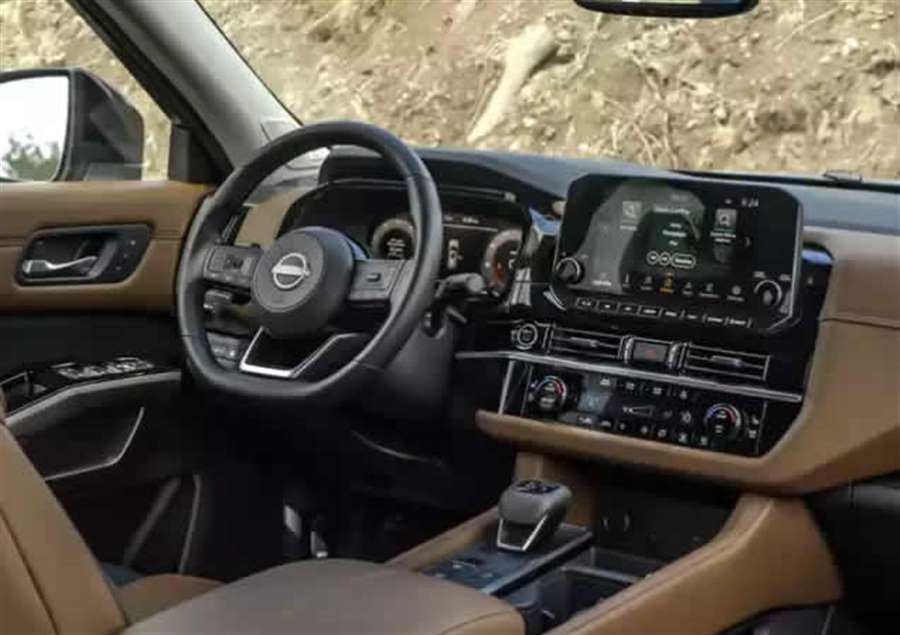
Nissan has kept the trim levels and pricing for the new Pathfinder simple with four trim levels. Two option packages are available, as well, so finding a Pathfinder that has a specific option you want (like the panoramic moonroof or leather interior) means finding the required trim level. The starting price is $34,560 for a front-wheel-drive S trim, which is roughly $1,400 more than the outgoing 2020 Pathfinder, while a Platinum 4WD rings in at just less than $50,000. That’s a healthy jump over the outgoing model, but it does reflect considerable added standard equipment, the most important of which might be the updated Nissan Safety Shield 360 system that brings automatic emergency braking with pedestrian detection, lane departure warning, rear cross-traffic alert, blind spot warning, high-beam assist and class exclusive rear automatic braking — that last one being a key feature for a family car, where kids may be running around the vehicle. The Pathfinder also features a driver alertness sensor, rear door alert and rear sonar as standard, with blind spot intervention, lane intervention and traffic sign recognition as optional. Nissan’s latest ProPilot Assist cruise control is also available, which helps steer the vehicle on the highway but doesn’t let you remove your hands from the steering wheel, unlike GM’s Super Cruise system.
So in the end, yes, the new Pathfinder is indeed a bit more rugged and a bit more capable off-road. But honestly, I think the areas that will matter more to its intended buyers are the better interior space, top-notch connectivity, smooth and quiet ride, and its ability to be an even more comfortable and capable family vehicle. The trend toward being more outdoorsy after enduring pandemic lockdowns will match well with the Pathfinder’s new image and abilities, but it’s good to know Nissan hasn’t sacrificed the aforementioned areas in which the Pathfinder needed to be good in favor of new areas where it really didn’t need to go at all.
(cars.com)
Mercedes-Maybach S680 4Matic - Top variant of the S class
Car lovers in the last few days definitely have reason to rejoice…
As we find out, the Mercedes-Maybach with a powerful V12 engine is definitely not dead. The famous German brand has finally presented a top variant of the S-Class line, which is still powered by this beastly unit. The 2022 Mercedes-Maybach S680 4Matic, is based on the new W223 generation S-Class and replaces the S650 that already exists in the Maybach portfolio. Beneath its long hood hides a six-liter V12 engine with two turbochargers that produces 621 horsepower.
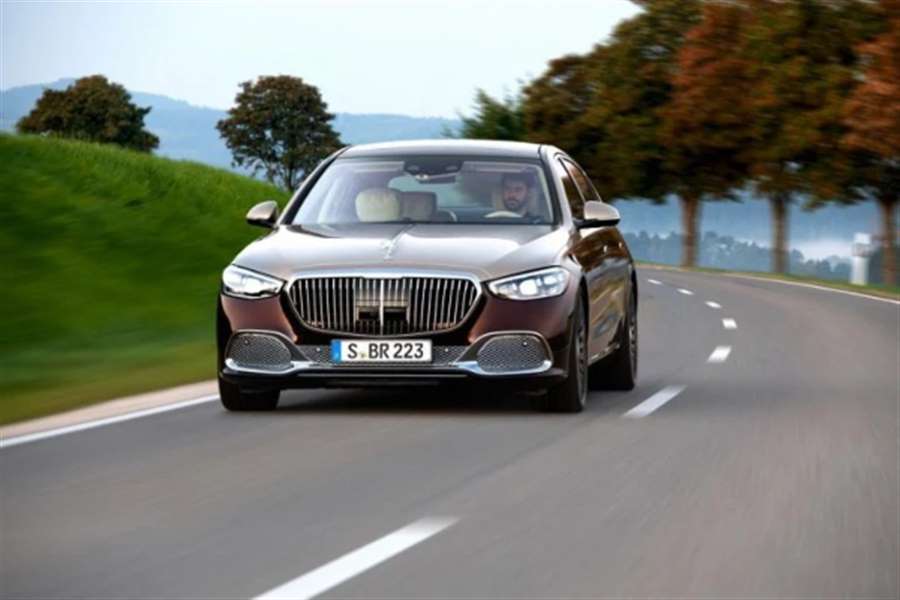
This engine is powerful enough to accelerate a massive luxury sedan weighing more than 2.5 tons from zero to one hundred kilometers per hour in just 4.4 seconds, before reaching an electronically limited top speed of 210 kilometers per hour. You may also have noticed the 4Matic suffix in its name which tells us that all-wheel drive is part of the standard offering. The premium Maybach has also been given all-wheel drive, making it easier to maneuver in tight spaces.
The design and special treatment that the Mercedes-Maybach S680 received is almost identical to the one we already saw on the S580 unit introduced late last year, except for the specific markings. This means that the model wears the same radiator grille with stainless steel details, while the two-tone exterior is optional and available in 10 contrasting finishes.
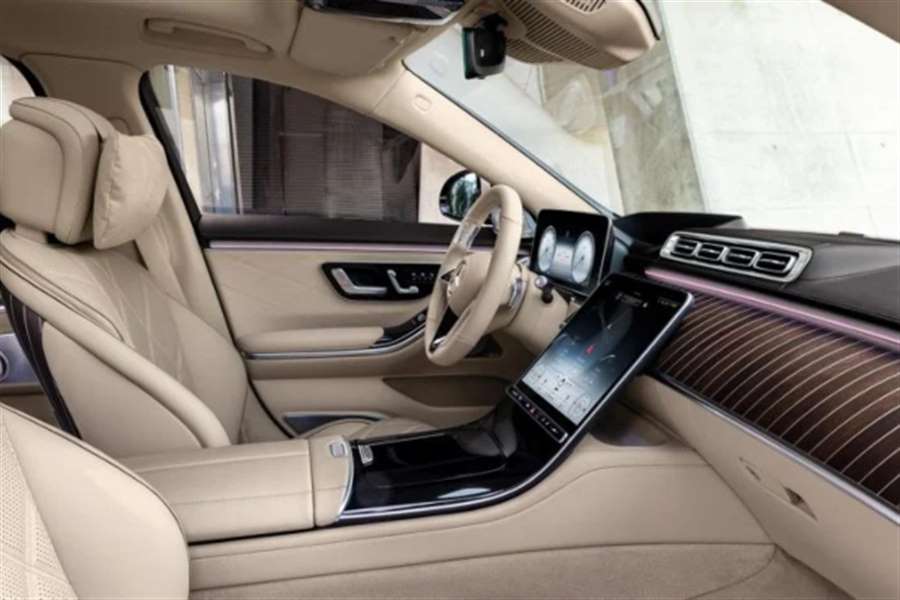
The passenger cabin is where a really special story begins. The interior is characterized by ultra-delicate Nappa leather, which can be seen on the dashboard, sky and visors. To further pamper passengers and drivers, the cab recognizes hand gestures and thus controls the sliding panoramic roof, rear shades and doors. The cabin itself is quiet thanks to all the materials that make it up, but the active sound control can be attributed to the Burmeister 4D surround sound system filter, which will eliminate even the tiniest road sounds, which manage to creep into the interior of the vehicle.
According to the Mercedes brand, the S680 will be available for purchase during the first half of next year, but its official price has not been announced yet. Since we know that a slightly weaker variant of the Mercedes-Maybach S580 can be purchased at a price of 163,000 euros, we can already assume that this novelty will be significantly more expensive. Still, did the Maybach owners ever care about the price?
Tesla Model X SUV review
"With cutting-edge looks and the technology to back them up, the Model X is one of the most impressive and family-friendly electric cars you can buy"
SUVs and off-roader style cars are selling in bigger numbers than ever before, so it’s hardly surprising that a company with the profile of Tesla should want to move into this fiercely competitive class – and with the Tesla Model X, that’s exactly what it’s done.
The Tesla Model X was the first electric SUV to go on sale in the UK. While it has few direct rivals due to its seven-seat layout and blistering performance, it helped pave the way for several other upmarket electric SUVs, including the Mercedes EQC, Jaguar I-Pace and Audi e-tron.
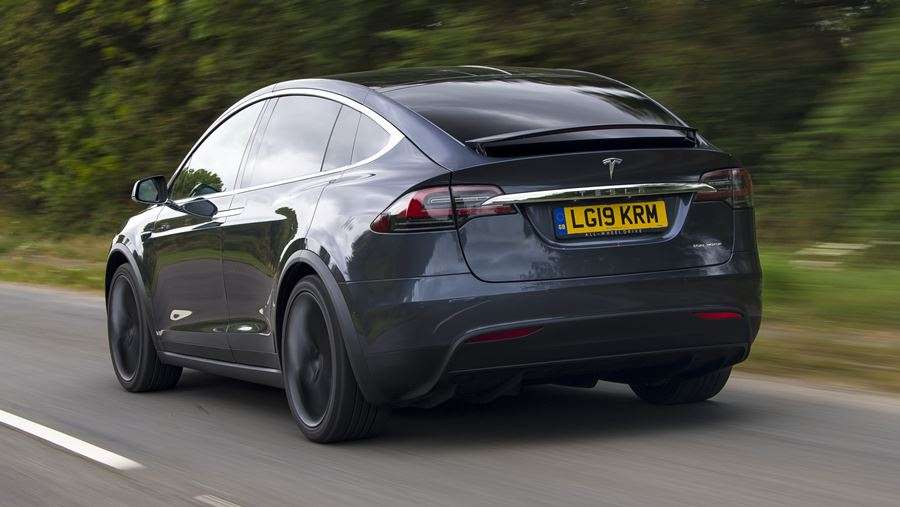
The Model X is sure to appeal to buyers who want the style and practicality of an SUV combined with an electric powertrain. One thing’s for sure: the Model X definitely draws its fair share of attention.
Despite being around for several years now, the shape of the Model X remains instantly recognisable, with its party-piece ‘Falcon Wing’ rear doors remaining an unusual, show-stopping feature. Expect small crowds to gather whenever they open, as onlookers wait to see whether children or aliens emerge from the futuristic-looking machine. They’re not just a gimmick, either – they allow easy access from the front or rear of the car, opening fully in less space than conventional doors.
Elsewhere, the Model X is just as sleek as its Model S sister, although it shares that car’s strangely blank-looking nose treatment that detracts a little from its visual appeal. Generally, though, the Model X has novelty and a high-tech look in its favour, but we reckon the Volvo XC90 is a more handsome SUV.
Offering definite appeal, though, is the technology under the metal. We’ll get to the vital factors of range and charging time later, because the statistics that grabbed all the headlines for the Tesla Model S related to its sheer power and performance, especially the blisteringly quick Performance version. The Model X Performance model uses the same dual-motor, four-wheel-drive power system and offers outrageous performance of 0-60mph in 2.6 seconds, thanks to the car’s ‘Ludicrous mode’. In April 2020, this performance was enhanced further still with the addition of ‘Cheetah Mode,’ which puts the car into an optimal suspension setting for blisteringly quick standing starts.
That’s much faster than a Range Rover Sport SVR, Porsche Cayenne Turbo or BMW X5 M can manage – in fact it's in the same league as the Ferrari 812 Superfast for acceleration – while carrying up to seven people, two more than any of its ultra-powerful rivals can accommodate.
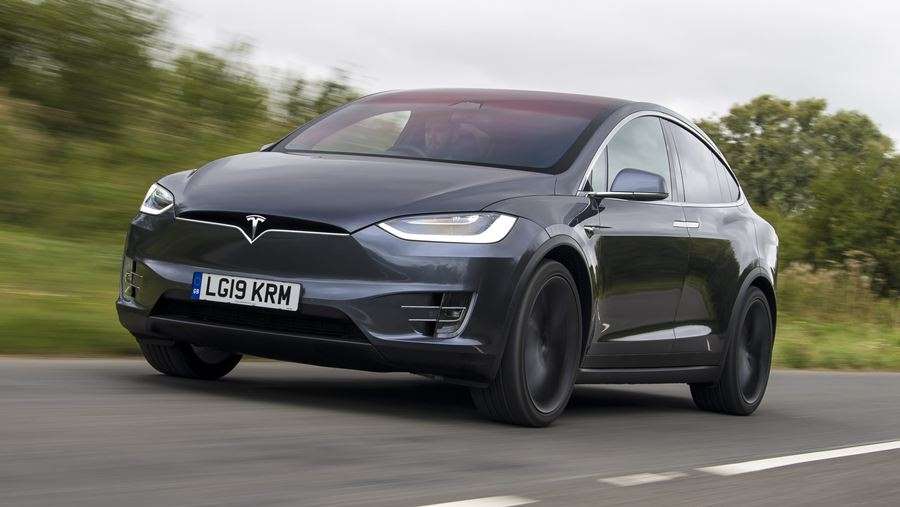
When you’re not exercising its explosive get-up-and-go, the Model X, like its saloon counterpart, offers a maximum driving range between charges that eclipses what most rivals can reach. Both the Long Range Plus and Performance models use a 100kWh battery, offering claimed range figures of 348 and 340 miles respectively.
Tesla has already announced updates to the Model X lineup for next year, including a new Long Range model capable of an estimated range of 360 miles. Above this, a new triple-motor model called the ‘Plaid’ is also available to order; it can sprint from 0-60mph in 2.5 seconds while managing up to 340 miles of range. According to Tesla, both new models will arrive in the UK towards the end of 2022. It’s worth noting that the models they replace are now no longer available, so there’s effectively a lull in brand new examples of the Tesla Model X arriving in the UK until at least late 2022.
In keeping with its hi-tech power system, the Model X interior is dominated by an enormous portrait-orientated touchscreen that controls much of the plentiful standard equipment, while a TFT display presents vital information to the driver. Motorway strain is alleviated by Tesla’s ‘Autopilot’ semi-autonomous driving system.
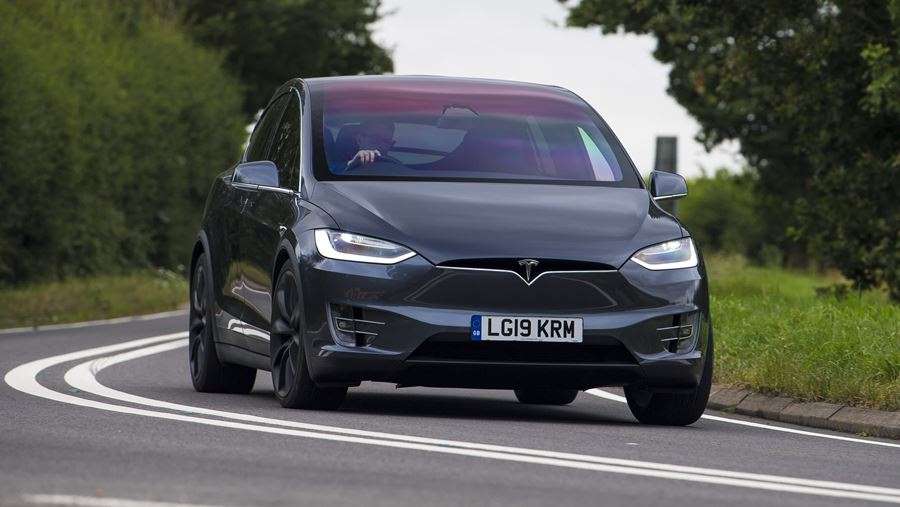
Electric power rather suits a car designed around SUV lines, too – the compact nature of the Model X’s battery packs and electric motors mean every inch of interior space can be used, so it’s a very versatile family vehicle. Five adults can stretch out on the two main seating rows, while an additional third row offers plenty of room for two children.
This all adds up to a very compelling package, which it needs to when you look at the list price. Both versions of the Model X aren’t cheap and are now more expensive than ever for two reasons: they no longer qualify for the government’s plug-in car grant (PiGC) and the entry-level Standard Range model, which used to cost from £75,000, was discontinued in 2020. The Long Range Plus model previously started from around £83,000, while the Model X Performance with ‘Ludicrous Mode’ started at around £100,000. They have been replaced by the Long Range and Plaid models, which cost from over £90,000 and £110,000 respectively; a pair of considerable price tags that would see you behind the wheel of some very exotic conventional cars.
However, there’s no forgetting the low daily running costs, the impressive range on a full charge, the tax advantages for company-car users and the sheer sense of occasion found in driving this car. The Model X will be prohibitively expensive for many, but it may just be the most complete electric family transport solution yet devised.
Tesla Model X SUV - MPG, running costs & CO2
Zero emissions make the Tesla Model X very cheap to run
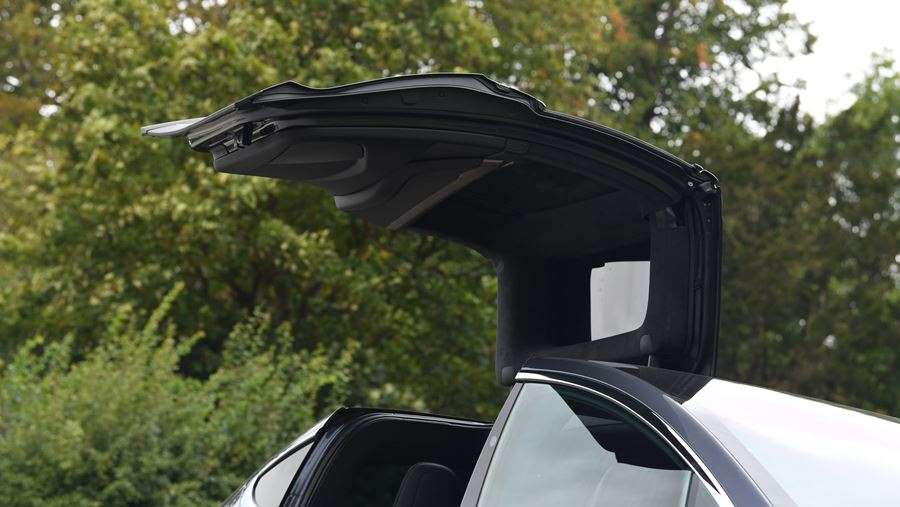
There's no getting around the fact that the Tesla Model X is expensive, whichever version you choose. With prices now starting at well over £90,000 for the entry-level Model X, it is considerably more expensive than most of its established luxury rivals. Combine this with the fact that the Model X no longer qualifies for the government's plug-in car grant, and the cost becomes a factor that holds it back from scoring more highly.
Of course, the Model X’s electric luxury-car status makes it a fairly unique product for the time being at least, so wealthy eco-conscious owners may not be put off by the price. Although it's out of reach of many car buyers, the Model X’s negligible running costs will help balance out the high price for those who choose a Tesla.
Tesla Model X range & charging time
With its long range and absence of any exhaust emissions, the Tesla Model X certainly has what it takes to save money on running costs compared to a conventional petrol or diesel SUV. However, its high purchase price places it out of reach of many motorists.
There’s one type of user for whom the high purchase price of the Model X might not matter – the small percentage of business drivers whose company-car allowance will stretch to the Tesla’s substantially high five-figure (P11D) starting price. If you belong to this rather exclusive club, it’s well worth considering the entry-level Long Range Plus model against premium seven-seat diesel SUVs such as the similarly priced Mercedes GLS 350d or Range Rover TDV6 – if only for the huge saving you’ll make on company-car tax.
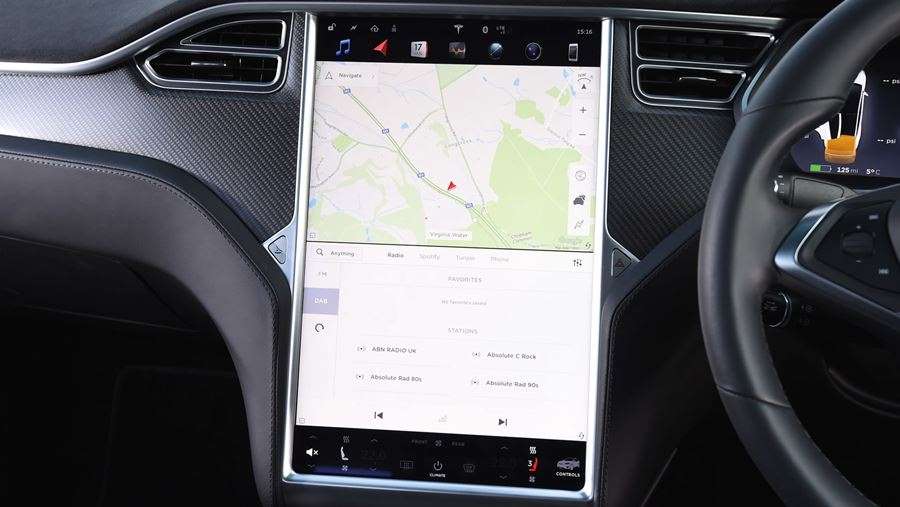
A total absence of CO2 emissions means the Model X will cost nothing in Benefit-in-Kind (BiK) company-car tax for 2020/21. This means it’ll cost massively less to run than the aforementioned GLS 350d – the latter’s CO2 figure of over 200g/km places it in the top BiK bracket, attracting the highest company-car tax costs.
Once the purchase cost of the Model X is out of the way, private owners can look forward to some serious savings compared to petrol or diesel SUVs of the same size – most notably a much reduced fuel bill. Electricity is far cheaper than petrol or diesel and all models have an impressive range. This means you’re not limited to short urban trips within dashing distance of a recharging point.
The Long Range Plus and Performance models in the Model X range have the same battery size, but varying power outputs and maximum ranges. The 100kWh battery pack of the Long Range Plus has a 348-mile range but the Performance model manages 340 miles. An overnight charge will cost only a few pounds.
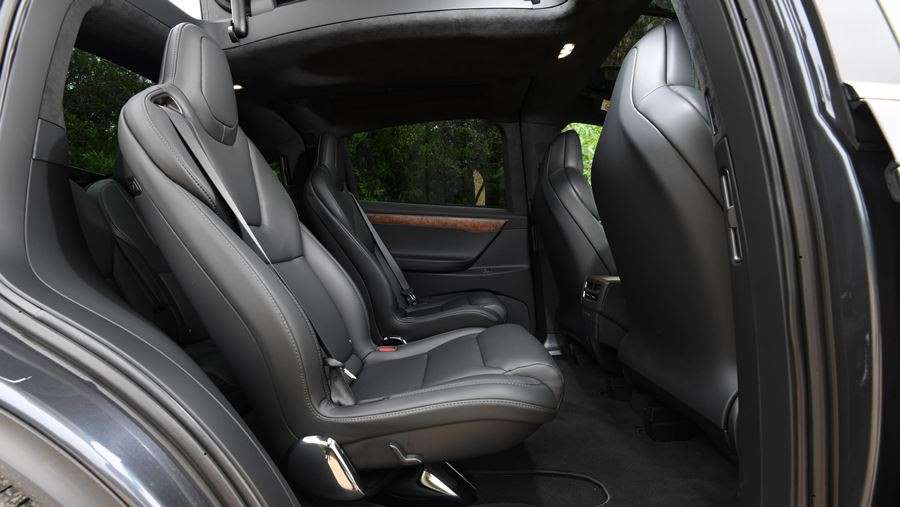
It should be remembered, though, that the car’s actual range will vary between drivers. Tesla admits that range will vary depending on cruising speed, outside temperature and whether your air-conditioning is switched on or off. However, with increasing numbers of fast-charge points appearing at motorway service areas, a mid-journey charge can be scheduled during a lunch stop, making long-haul family road trips a possibility – something not all electric cars can offer. The ever-growing Tesla Supercharger fast-charge network can top up the Model X to 80% within half an hour.
Along with an exemption from VED (road tax), the Model X is also exempt from the annual additional surcharge payable on cars costing more than £40,000.
Insurance
Perhaps due to high repair costs and the Model X’s brisk performance, all versions occupy insurance group 50, the highest banding there is. This compares to the group 45 rating of diesel Range Rovers, although the Mercedes GLS 350d is also placed in group 50. It’s certainly worth obtaining an insurance quote before you decide to buy.
Warranty
Tesla offers an impressive warranty for all cars supplied in the UK, although it’s supplied by AXA insurance rather than Tesla itself. It’s a four-year/50,000-mile policy, while the battery and drive units are covered separately with an eight-year/unlimited-mileage warranty. The main warranty can be extended for up to a total of eight years.
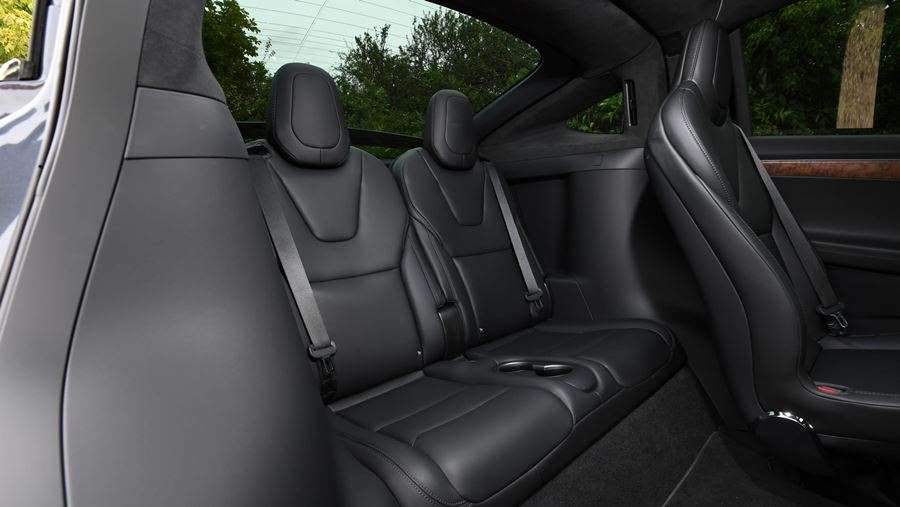
Servicing
Tesla states that its cars require less mechanical servicing than conventional petrol or diesel models, but recommends an inspection every 12,500 miles – or yearly, whichever is the more frequent. Maintenance plans are available to help spread the cost of. Software updates can be performed during scheduled maintenance appointments, or downloaded ‘over the air’ by the car’s on-board internet connection. Tesla suggests that you connect your vehicle to your home’s Wi-Fi network for the fastest possible download time.
Tesla Model X SUV - Engines, drive & performance
If anything belies the idea that electric cars are slow, it’s the Tesla Model X
Despite the fact that it’s a heavy car (weighing in at around 2,300kg), the Model X is satisfying and rewarding to drive on challenging roads. It could never be described as agile, but doesn’t suffer the lumbering, roly-poly feel of most large SUVs. This is thanks to the batteries sitting as low down as possible in the body, which means the Model X has an extremely low centre of gravity, minimising body lean in corners.
As all models use Tesla’s dual-motor, four-wheel-drive configuration, there’s loads of traction on greasy roads or loose surfaces and you can carry a lot of speed through corners without losing confidence. There’s a lot of technology at your disposal to keep the Model X on an even keel, including ‘smart’ air suspension linked to the car’s sat-nav system. This can vary the car’s ride height depending on speed and the kind of surface you’re travelling on.
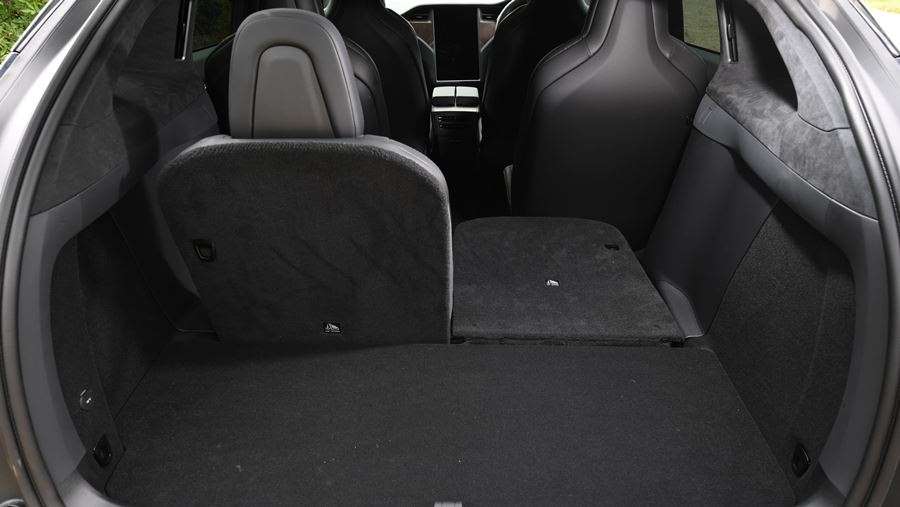
It’s a shame, then, that the feel from the Model X’s electrically assisted steering is rather unconvincing and artificial – akin to a computer game. Although accurate and controllable, you have to rely on your eyes and ears to gauge when the Tesla is close to its limits.
Tesla Model X electric motor
Whichever version of the Tesla Model X you go for, you’ll have an exceptionally quick car on your hands. The Long Range Plus model can cover 0-60mph in 4.4 seconds. Top of the tree sits the Performance, which has a ‘Ludicrous mode’ to enable 0-62mph in a jaw-dropping 2.6 seconds. A software update in April 2020 added ‘Cheetah Stance’, which lowers the nose of the car and adjusts the suspension to improve performance for standing starts. Its wealth of performance abilities comfortably make the Model X Performance the fastest SUV ever built, yet one with a reasonable 340-mile range between charges.
Although the initial rush of acceleration is quite an experience, it isn’t quite so dazzling once you’ve reached cruising speed. At normal speeds, the car’s overtaking ability on the motorway doesn’t feel massively better than that of a powerful diesel or petrol car. The surge from 40-70mph, though – a speed range that covers overtaking slow traffic on single-carriageway roads, for example – is really very impressive.
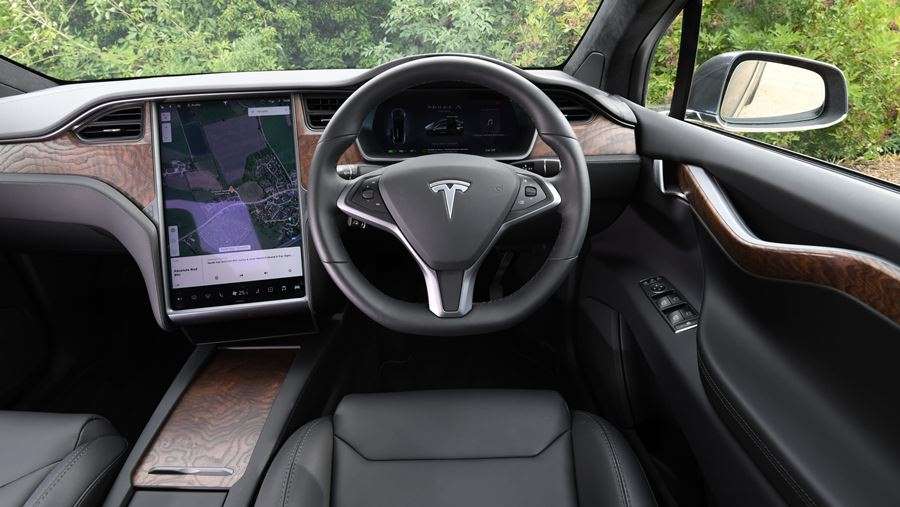
Tesla Model X SUV - Interior & comfort
It’s very light, airy and comfortable, but the build quality of the Tesla Model X is a concern
As you might expect, the Model X is also a terrifically serene car to travel in, with barely a whirl from the motor as you pull away and only the faintest hint of wind noise rustling around the front of the car when you’re up to speed. Needless to say, with so little background noise to overcome, the stereo sounds fantastic.
Beyond its hi-tech touches, though, the Tesla’s interior isn’t actually the most imaginatively designed, nor are all the materials from the top drawer. All the switches that control things not directed from the huge central screen come from Mercedes of old, and some of the plastics on show can’t rival Audi or BMW for quality.
Tesla Model X dashboard
Hop into the Tesla Model X and you’d be forgiven for being temporarily stunned by the sheer size of the vast central touchscreen from which just about all of the car’s functions are controlled. While it looks impressive and seems like a fantastic idea, it might take you longer to completely get the hang of compared to other systems, especially if you’re used to a more conventional layout.
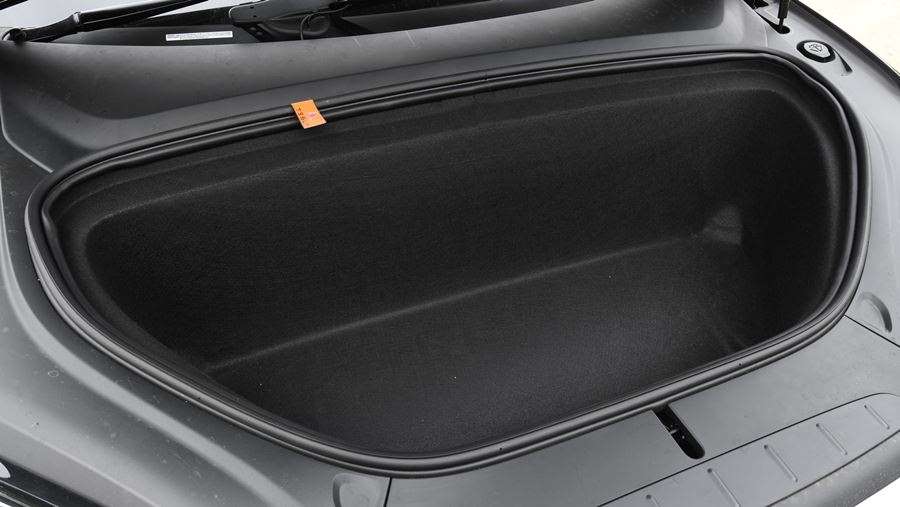
The old touchscreen weakness still applies, too – you may find yourself stabbing inaccurately at the screen on bumpy roads. We’d prefer a few more tactile physical buttons that you can use on the move without taking your eyes off the road.
There’s another screen that dominates the experience too, and that’s the one behind the steering wheel, which shows all the information you’d expect to find in the instrument binnacle of a conventional car. Like Audi’s Virtual Cockpit system, it’s fully configurable by the driver and can show things like speed, battery charge, sat-nav directions, range and what you’re listening to on the car’s stereo.
Connectivity in the Model X is a strong point; install the Tesla app on your smartphone and you can control a range of functions, including the remote-opening doors, climate control and even the headlights and horn. The app also shows how much range your car has left.
Equipment
The Tesla Model X is a lavishly equipped car, whether you choose the Long Range Plus or Performance. All have an air-suspension system with a GPS link that remembers where a higher ride height is required, those eye-catching ‘falcon wing’ rear doors and a huge panoramic windscreen and sunroof. More prosaic are the standard heated seats, keyless go, sat nav with real-time traffic information and up to four ISOFIX child-seat points, depending on the number of seats you choose.
Options
The Model X can be chosen with five, six or seven seats, the first coming as standard. Choosing a three-row, six-seat layout costs an additional £6,300, while a seventh seat is an additional £3,400.
‘Enhanced Autopilot’ is another £5,900, but enables the car to autonomously change lanes to overtake slower traffic, and even to pull off onto slip roads according to the navigation route being followed. A full self-driving capability can be purchased post-delivery, and enables the car to begin its journey with a simple voice command of where you want to go – it can then theoretically do all the driving work itself. However, although the system is “ready to go”, it’s not yet approved for full use on public roads.
Tesla Model X SUV - Practicality & boot space
There’s no doubting the Tesla Model X is a very practical car
The Tesla Model X is a little more compact than more conventional SUVs and its form isn’t dictated by having to accommodate a bulky petrol or diesel engine. Although its outline has a conventional bonnet, you’ll find nothing under it other than a few mechanical service points and a storage area. In fact, the latter contributes to the Model X being an extremely practical family hauler.
Tesla Model X interior space & storage
You can choose the Model X with anything between five and seven seats, and the seats in the first two rows are very comfortable and spacious. Up front, visibility is excellent (although the steep rake of the windscreen does mean that distracting reflections are frustratingly frequent) and there’s plenty of adjustment for the seat and steering wheel.
Getting in and out is easy in both the front and back, with the clever ‘Falcon Wing’ rear doors providing a wide aperture for access to the two back rows, but some may find the 15 seconds they take to open and close a little wearisome. We were impressed by how little space they take up when opened, though, and a proximity sensor is fitted to prevent the doors from striking obstacles.
There’s plenty of leg and headroom for those in the second row, but the third row is better suited to children.
The car comes with an eight-year/unlimited-mileage warranty for its battery and motor, along with a more general four-year/50,000-mile warranty.
Boot space
At the front of the car, a 187-litre storage space under the bonnet can take soft luggage. If you want to lug as much gear as possible, combining this and the boot with all the rear seats folded flat adds up to 2,367 litres of load volume – the same as the far bulkier Mercedes GLS manages. Loading is made easy thanks to a rear boot floor that can be raised for a reduced lip height; there’s also a removable panel for accessing a deep compartment where you can store the car’s charging cables.
Towing
Software is included that monitors trailer sway and applies the brakes to keep car and trailer on an even keel. The braked trailer towing limit is 2,280kg which reduces to 1,588 if you choose the optional 22-inch wheels.
Tesla Model X SUV - Reliability & safety
No evidence of reliability yet, but Tesla’s reputation is encouraging
The Tesla Model X was crash-tested by Euro NCAP in late 2019, earning a five-star safety rating. In 2016, Tesla was the runaway winner of our Driver Power manufacturer survey but since then it hasn’t made an appearance due to too few responses from owners. However, we’ve heard little in the way of complaints from Model X owners, even with the vast array of technology hidden under the car’s bodywork.
Tesla Model X reliability
We can’t compare Tesla’s 2016 Driver Power survey results with those of brands that feature in newer surveys. However, it is fair to say that owners then had mainly positive words for their cars, and we’ve heard little to suggest that things have changed. Owners rated the Model X very highly for reliability, although build quality came in for a little less praise. The Model X is closely related to the Model S under the surface and that car is now well proven. However, some owners in America have reported faults with the ‘falcon wing’ doors.
Safety
When the Model X was crash-tested by Euro NCAP it scored a maximum five-star rating - the same overall score as the Model S and Model 3. The Model X rated highly across the board, including 98% for adult occupant protection and 81% for child occupant protection.
Thanks to its advanced suite of standard safety kit that includes autonomous emergency braking and the ‘Autopilot’ driving assistance system, the Model X scored a highly impressive 94% for safety assistance - a rating only matched in 2019 by the Model 3.
(carbayer.co.uk)
From next year, Nissan will no longer sell Navarro on the European market
Nissan announced earlier that it plans to close its factory in Barcelona, which basically means that Navarra will be withdrawn from sale. At least in Europe.
According to Nissan, the decision reflects the shrinking pick-up market in the Old Continent, where only 116,280 sales were registered last year. The Renault Alaskan and Mercedes X-Class, sister models of the Navarre, were also made in Barcelona, but were discontinued for the same reason.
"Production of the current-generation Nissan Navara for European markets will end when our Barcelona plant closes in December 2021, and sales will be completed during 2022," Nissan said in a statement to Automotive News. "This reflects the declining segment of trucks in Europe and the shift that many consumers are taking from trucks to our range of modern and efficient vans."
Nissan had an alternative solution to import Navarre from Thailand to Europe, although the board of directors has already decided not to do so.
Navarra was first launched in 1985, and was even produced in Greece for the local market. The 2004 model is still considered very important for the European segment of the truck, as it has revolutionized it with a more comfortable cabin, new features and more refined driving quality. Mercedes also tried to steal sales from segment leaders Ford Ranger and Toyota Hilux in Europe with the X-Class, which was closely linked to the Navarre. It was discontinued in May last year due to poor sales, and was followed by Renault Alaskan.
New Porsche Taycan RWD 2021 review
The entry-level Porsche Taycan loses four-wheel drive, but is sharper as a result
Verdict
This latest Porsche Taycan proves that the car’s high points are at the extremes of the range. If you want thrilling, mind-bending performance, get the Turbo S. If you want a version with a great real-world range, its own unique character and a significantly reduced price, then this new entry point is the best buy for most. A brilliant EV line-up just got even better.
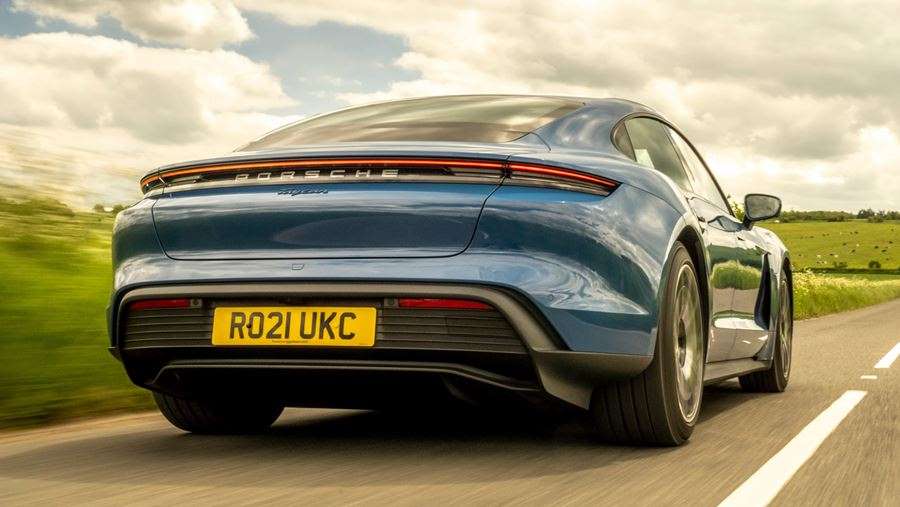
What you’re looking at here is the new Porsche Taycan. That’s just ‘Taycan’, without any extra garnish attached to the name, because it’s the new entry point for the high-performance line-up. Before options, prices start from £70,690, so it’s a full £12,890 less than the next model in the line-up, the all-wheel drive Taycan 4S.
On the face of it, it’s hard to see what it loses. There’s still the same dramatic body, the same driver-focused cockpit, and the same battery as the 4S – 79.2kWh as standard, or 93.4kWh for the upgraded Performance Battery Plus pack fitted here.
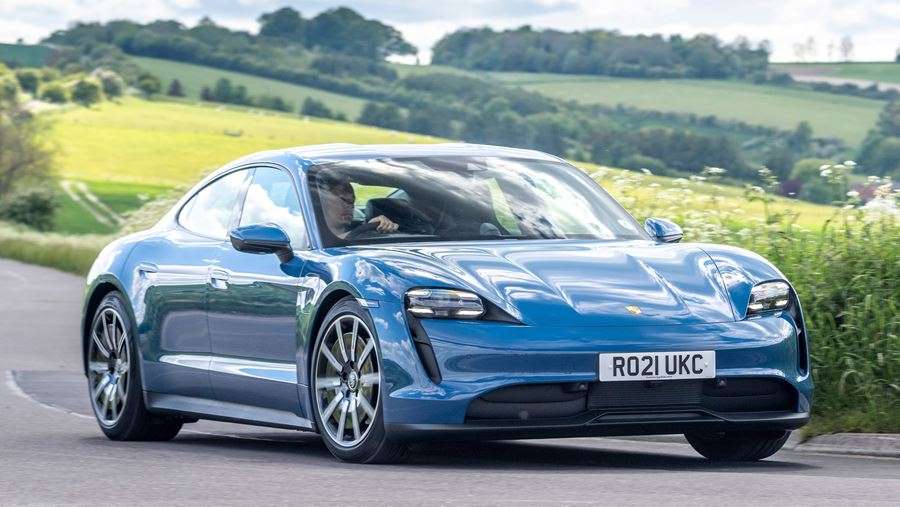
There are two main features this base model lacks, but it turns out they’re hardly missed. Until now, the Taycan range has exclusively offered four-wheel drive, with a motor driving each axle. This new variant drops the front motor to make it the only rear-wheel-drive option. That means it’s down on power and torque, with a mere 424bhp and 345Nm compared with the 523bhp and 640Nm that the 4S gets in launch control mode. Adding the Performance Battery Plus raises those figures slightly to 469bhp and 357Nm, though.
As a result, the 0-62mph dash takes 5.4 seconds – 1.4 longer than the 4S. Leave the Taycan in its Normal drive mode and its straight-line punch is a world away from the mind-bending speed of the Turbo and Turbo S models. But in almost any real-world situation, it’s still more than quick enough.
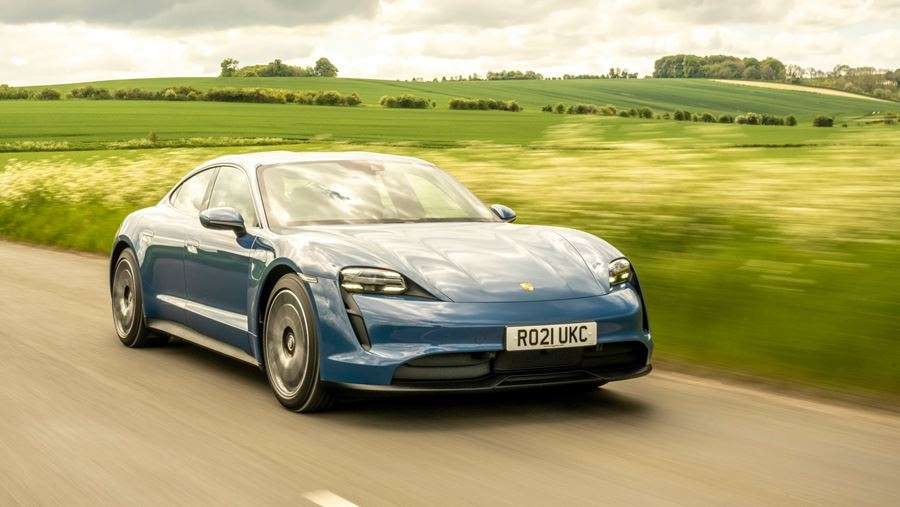
Twist the steering wheel-mounted drive-mode dial one step clockwise into Sport, or a step further into Sport Plus, and the full potential is revealed. Here the Taycan abruptly shunts down from its energy-saving high gear into the lower ratio for more lively low-speed acceleration. Now the car leaps forward dramatically, yet still in eerie silence. The 49-74mph time of three seconds may be 0.7 seconds off the 4S, but it’s still quicker than a 718 Boxster.
Ditching the front motor means the Taycan has lost some of its performance, but it also means that it has lost weight. It undercuts the 4S by 90kg, and while that’s not game-changing in a car that weighs 2,130kg with the big battery, most of that mass has disappeared from over the front wheels.
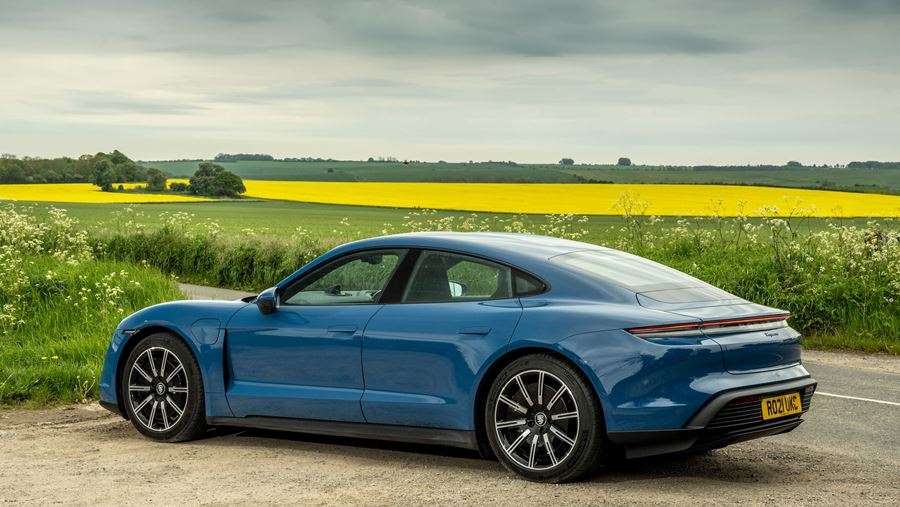
This has a subtle but profound effect on the steering; it’s precise and beautifully weighted as ever, but with less resistance when the front wheels load up through a corner. It makes it feel keener to turn in.
Which brings us on to the second significant change to this version. In a departure from the rest of the range, the Taycan goes without air suspension; it gets steel springs instead.
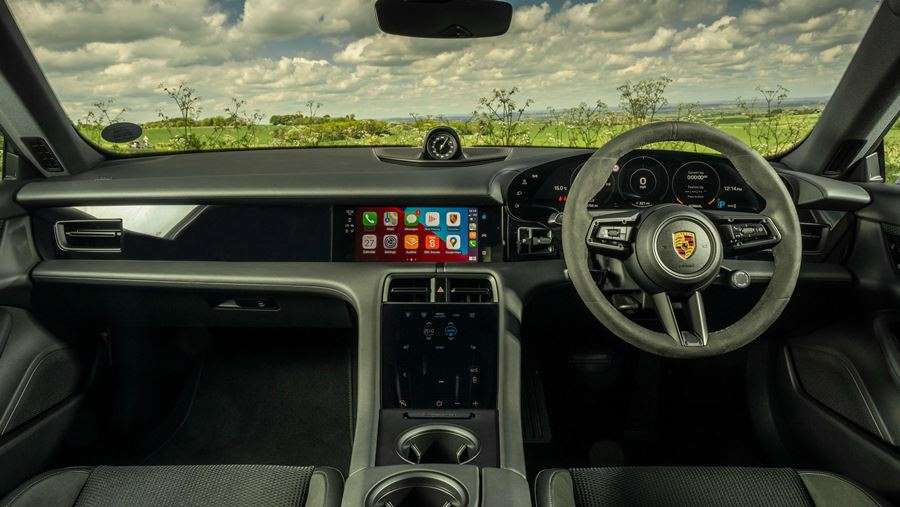
While the air set-up delivers a floaty ride at a cruise, it can also thump into harsh bumps at speed. By contrast, this coil layout reacts more quickly to shocks. Through the turns themselves, there’s very little to separate the two systems. With such a low centre of gravity, the Taycan remains incredibly flat, grip levels are astonishing, and the overall balance means that it’s an easy car to trust.
Even with only two driven wheels, traction is remarkable. In the dry the Michelin Pilot Sport 4 tyres at the back barely chirp in protest, even when the throttle pedal is mashed into the floor out of a tight corner. Indeed, the only time the tyres do protest is under heavy braking.
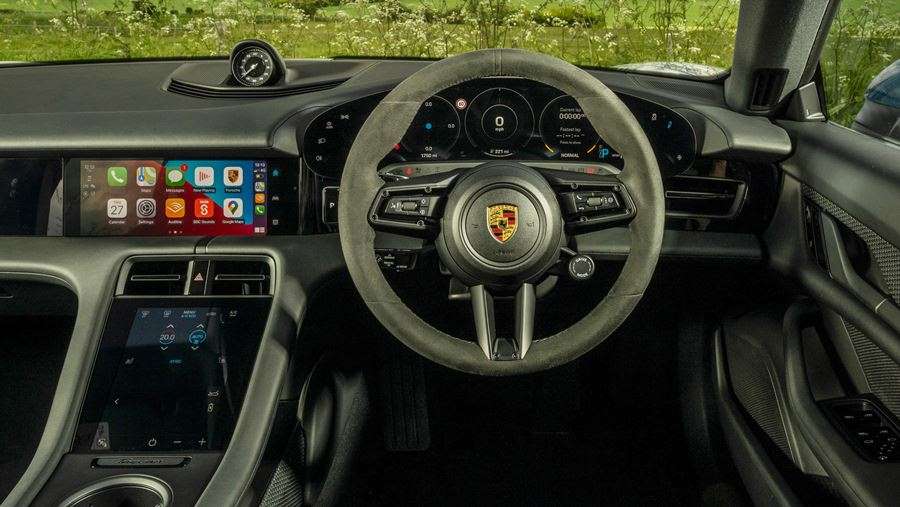
Strong as they are, the brakes aren’t quite perfect, however. The energy recovery system, which uses drag from the motor to slow the car down and charge the battery, is weak; there’s no single-pedal option here, and no steering wheel paddles to adjust the regen on the fly. The transition between regenerative braking through the pedal and regular braking from the discs and pads is a little jerky, so it’s not always easy to bring the car to a smooth stop.
This is a minor flaw, though, in what is otherwise a hugely accomplished car. While the Taycan Turbo S grabs the headlines for its neck-straining straight-line shove, this entry point to the range is otherwise the most entertaining and involving Taycan to drive on a daily basis.
It’s also one of the most efficient, too. Losing the extra weight has boosted the car’s range; equipped with the optional larger battery, the Taycan will cover 299 miles between charges. On a warm day, at a 99 per cent charge in Normal mode.
| Model: | Porsche Taycan |
| Price: | £74,739 (including Performance Battery Plus) |
| Powertrain: | 93.4kWh battery/e-motor |
| Power/torque: | 469bhp/357Nm |
| Transmission: | Two-speed auto, rear-wheel drive |
| 0-60mph: | 5.4 seconds |
| Top speed: | 143mph |
| Range: | 299 miles (WLTP) |
| Max charging: | 270kW DC |
| On sale: | Now |
(autoexpress.co.uk)
Citroen e-Jumpy Hydrogen with fuel cells
Stellantis, the world's fourth-largest vehicle maker, created by merging PSA and FCA, announces that it will start selling light commercial vehicles powered by hydrogen fuel cells in Europe by the end of this year.
According to Tportal.hr, Stellantis, for the beginning of the Citroën, Opel and Peugeot brands, leads the application of technology developed in France and Germany on their current architectures of medium-sized electric BEV vans: Citroën e-Jumpy, Peugeot e-Expert and Opel Vivaro. It should be noted that such hydrogen-powered vehicles will be produced at Opel's headquarters in Rüsselsheim, Germany, and Stellantis itself will later examine the expansion of the technology to other brands, and possibly to passenger cars, and expects the project to be profitable in the coming years.
Although 83 percent of commercial customers travel less than 200 km a day on average, only 44 percent never drive more than 300 km a day, said Xavier Peugeot, Stellantis' senior vice president of light commercial vehicles.
The medium-power system is smaller than other competitors and matches a large 10.5 kWh battery, said Frank Jordan, Stellantis' director of research and innovation in Germany. The fuel cell system stops under the hood, the drive battery is replaced by three hydrogen tanks, and the battery stops under the front seats. The vehicle has 100 kW / 136HP and 260 Nm, the tank holds 4.4 kg of hydrogen (in tanks under a pressure of 700 bar), with the already mentioned battery with a capacity of 10.5 kWh.
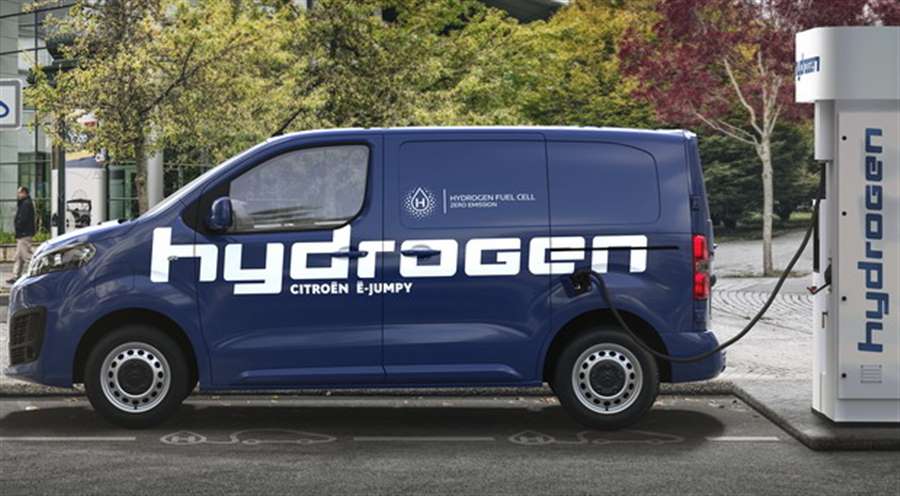
Acceleration to 100 km / h takes 15 seconds and top speed is 130 km / h.
According to Stellantis, the van will be capable of a range of approximately 400 km, but it also has the option of charging the battery (plug-in) and driving a purely electric battery on a 50 km battery if needed to connect to the next hydrogen charging station. The drivetrain, which includes a hydrogen engine and an additional battery as in the BEV vehicle, also retains up to 6.1 m³ of volume (vehicle length is 495 cm or 530 cm) for transporting cargo and 1100 kg of payload and towing trailers weighing 1000 kg from the electric version .
Hydrogen tanks can be filled with fuel in three minutes, as stated in solving the problem of slow filling speeds of electric vehicles. On the technical side, hydrogen makes special sense for larger vehicles, as it offers higher energy density, lower weight, longer range and faster refueling times.
Leading countries such as Germany and France have only 90 and 25 pumps, respectively, where hydrogen can be bought as fuel for vehicles, Peugeot said, although the European Alliance for Clean Energy has committed to investing in the ecosystem. France alone plans to invest more than $ 8 billion by 2030 in hydrogen, especially in its production and mobility development, said Jean-Baptiste Djebbari, the French Secretary of State for Transport.
Audi Q4 e-Tron (2021) review: total eclipse
You know how they say never buy the first version of a new Apple product? Perhaps a similar golden rule should be applied to electric cars.
The first model based on the VW Group's entry-level electric platform, the VW ID.3 released last summer, had a premature, unfinished edge to it. But every new MEB derivative launched since then has bettered the previous version. The ID.4 is quantifiably more appealing than the hatchback, the Skoda Enyaq is more convincing overall than both Volkswagens, and now the Audi Q4 e-Tron raises the bar for looks, perceived quality, driveability and performance.
Before we get into that...
Yes, some headline specs. Built in Zwickau on the same line as the ID twins, Audi's entry-level e-SUV is also offered in Sportback guise, with a slightly more coupe-like shape and a drag coefficient of 0.26. In the UK, prices for the Q4 e-Tron start at £40,750, and for the quattro version begin at £51,370. Sportback pricing has yet to be confirmed. but expect to pay a couple of grand more.
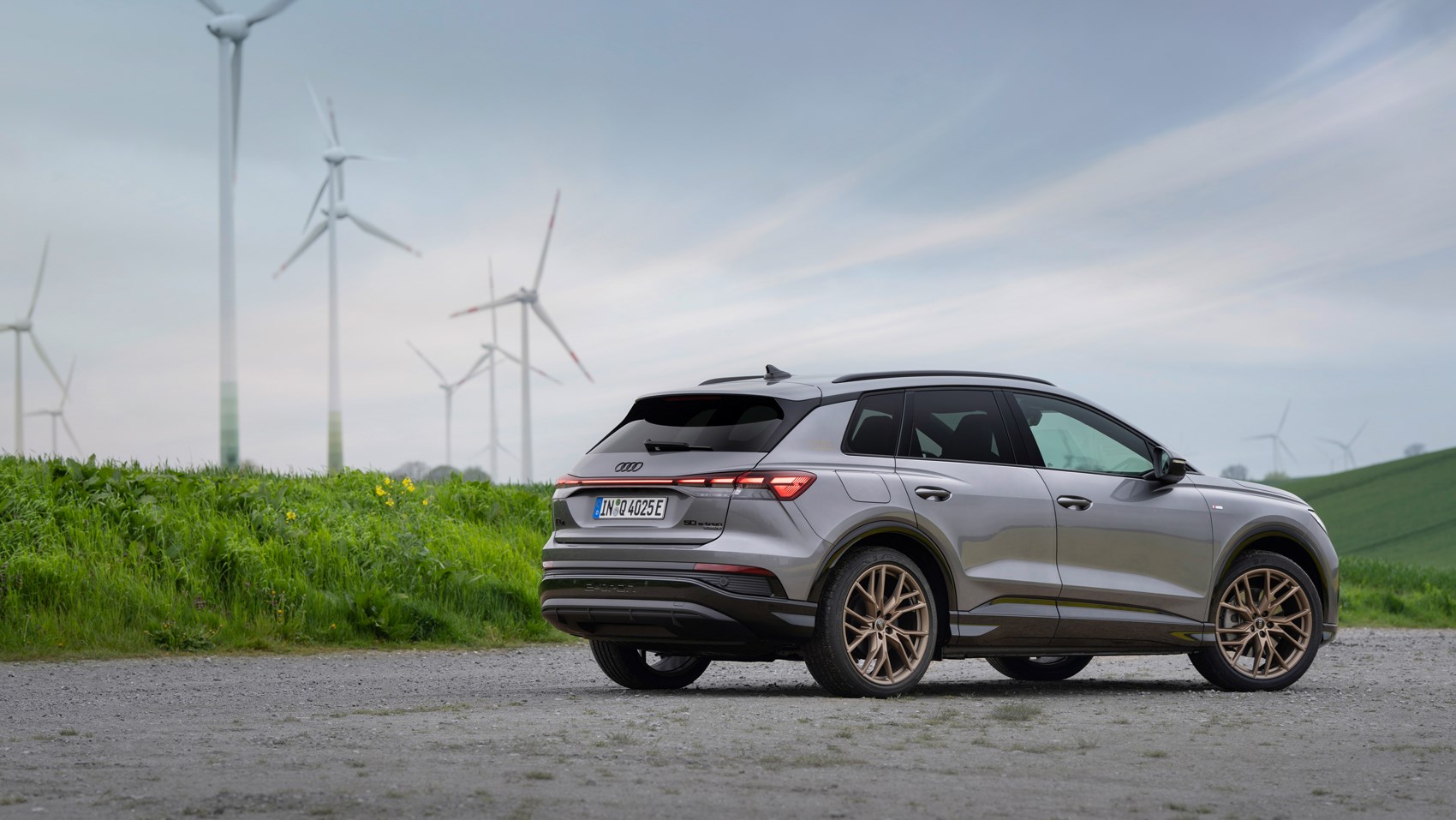
The line-up available at launch time consists of two rear-wheel-drive versions, the '35' and '40', rated at 168bhp/229lb ft and 201bhp/229lb ft as well as the 295bhp/339lb ft quattro edition, the '50', which sports a bigger 77kWh (net) battery, and a second motor ready to drive the front wheels should traction issues or performance itches arise.
We're driving the 50 quattro here. The 295bhp Q4 manages to win the 0-62mph acceleration derby against the 308bhp e-Tron SUV by 6.2 against 6.8sec. More important still, its maximum range of 305 miles compares favourably to the 213 miles recorded to WLTP rules for its bigger brother.
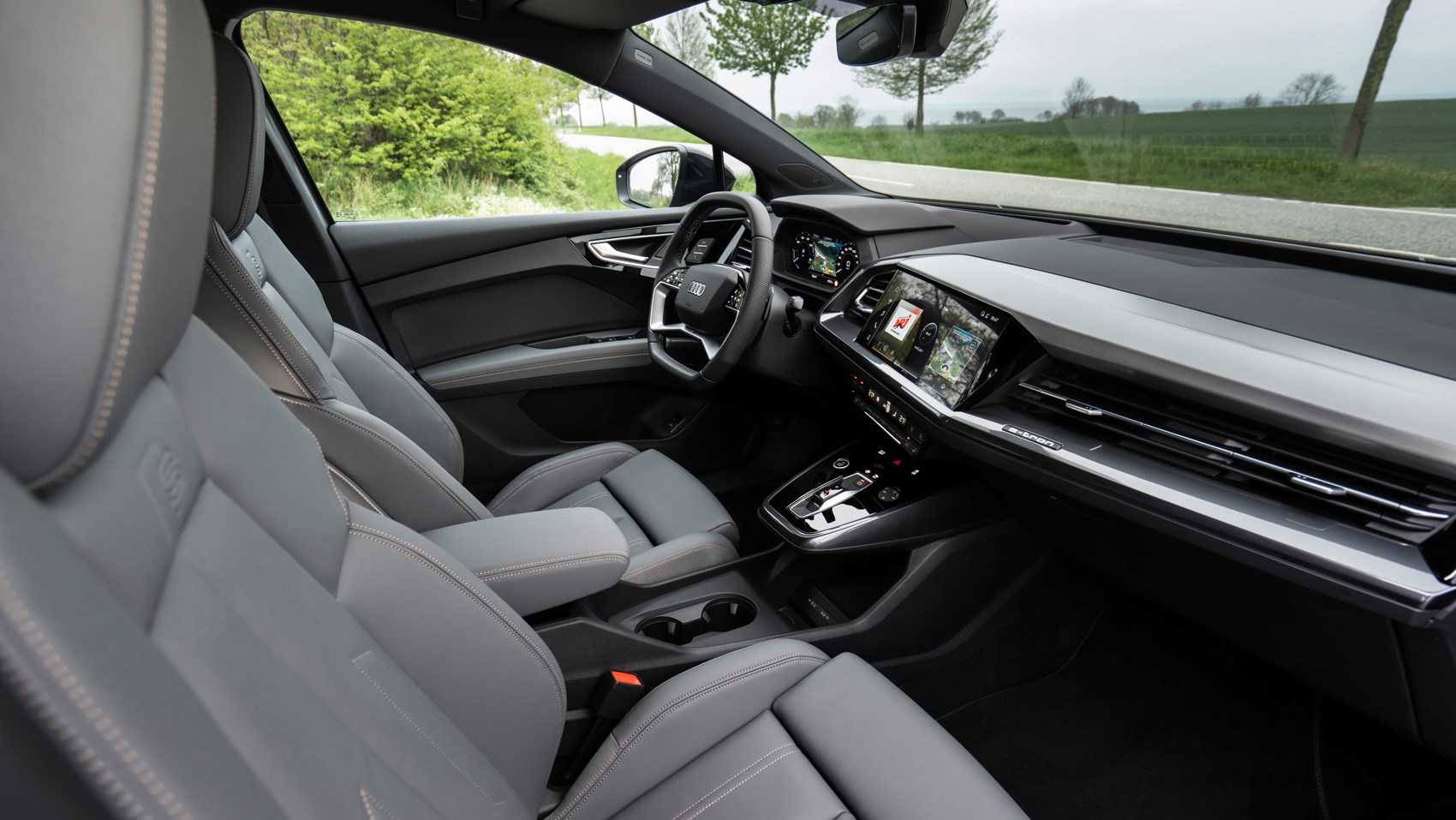
While the smaller 55kWh (42kWh net) energy pack installed in the 35 e-Tron can be charged with up to 100kW, the 40/50 e-Tron accept a maximum dose of 125kW. A 10-minute plug-in stint typically extends the range by 80 miles. The official consumption spectrum ranges from 3.0 to 3.8 miles per kWh, which barely differs from the e-Tron GT.
These numbers show that yesterday's plug-in heroes are overtaken left, right and centre by newer models boasting more advanced batteries, motors and software.
What else makes the Q4 e-Tron stand out?
Surprisingly, the electric counterpart of the Q3 even beats the pricey e-Tron GT as far as interior design and the overall craftsmanship are concerned, not to mention the fact that the top-of-the-line Q4 50 e-Tron quattro costs over £10k less than the base full-size e-Tron SUV, which is 300mm longer but not dramatically roomier inside.

The Q4 cockpit, then, is a class act, with some exceptions: the silly iPod volume control, the available quartic steering wheel (again, standard with the top two trims) and the unpadded armrest and centre console where long legs typically come to rest. Up front, there is enough room to swing a tiger kitten, space in row two is also generous, visibility is panoramic (less so in the Sportback), and the top-notch surfaces which used to be typical of the brand until the arrival of the latest A1 and A3 are back in full force.
In contrast to the confusingly alternative ergonomics pioneered by the ID.3, the Audi brings back the classic direct-access temperature controls, puts the gear selector back where it belongs and reduces the number of vague touch sliders to a minimum. Depending on the depth of your pocket, there are up to three different (and largely redundant) displays to select from. On top of this all, voice control attempts to guide you through a vast variety of menus and sub-menus. Less might be more.
How does the Q4 drive?
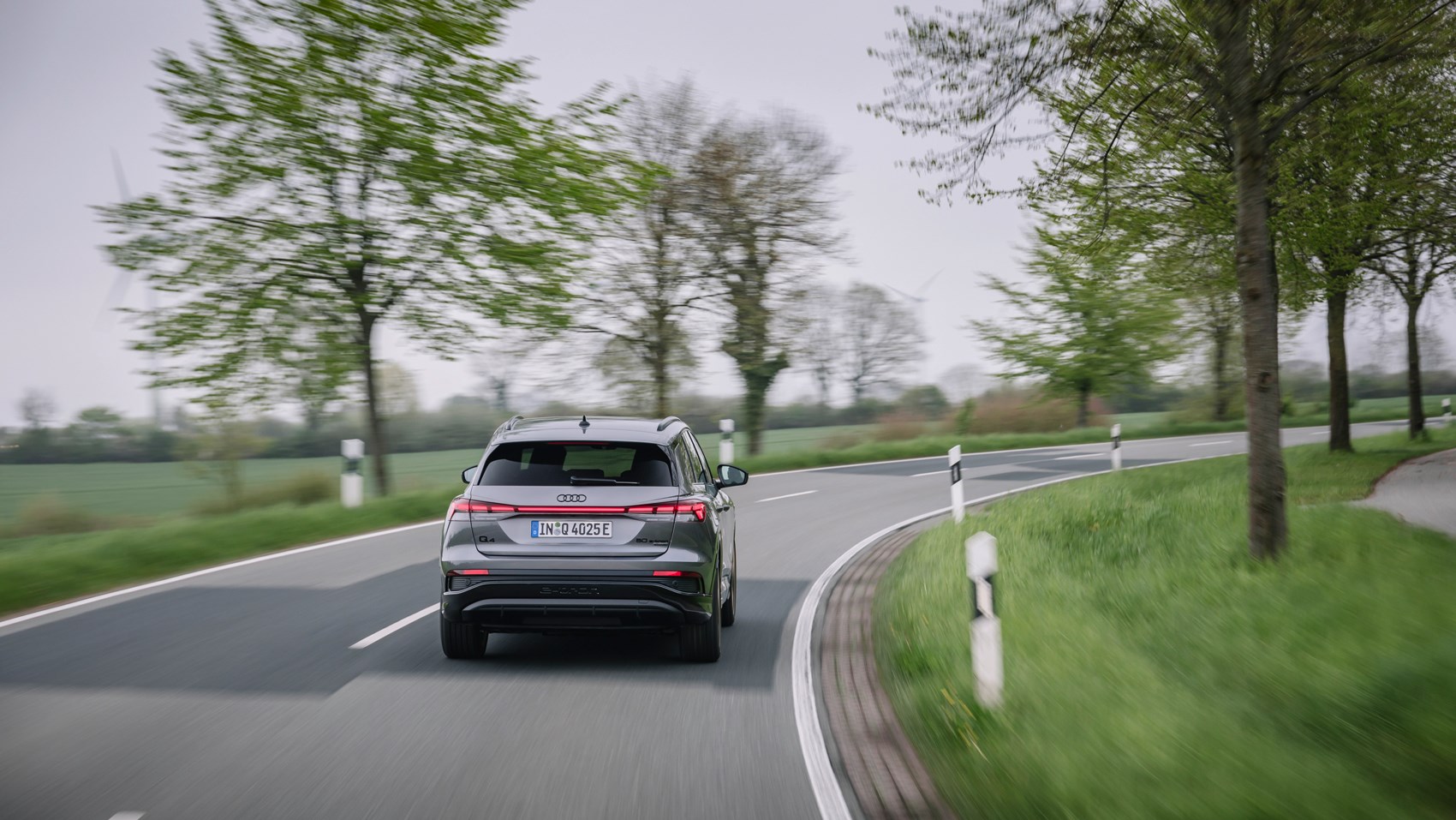
The Q4 e-Tron's more muscular stance also supports a more eager turn-in action than other MEB-based cars, a more neutral cornering balance and a smoother driver-to-car interaction. Our Q4 50 e-Tron 50 quattro refrained from picking a fight with every pothole in reach, wriggling its shoulders when straddling aquaplaning grooves and jarring the driver's palms in the wake of gaping expansion joints.
Although Skoda and VW have announced all-wheel-drive versions of their MEB cars, the Q4 quattro is actually the first of its kind to come to market, available this summer. Along with more power, it introduces adaptive torque vectoring to the handling sweepstakes, and its variable dynamic weight distribution makes the car more chuckable through fast zig-zag corners. The two propulsion units orchestrate the wheel-selective quattro system, which minimises understeer and oversteer while cementing directional stability even on tricky surfaces.
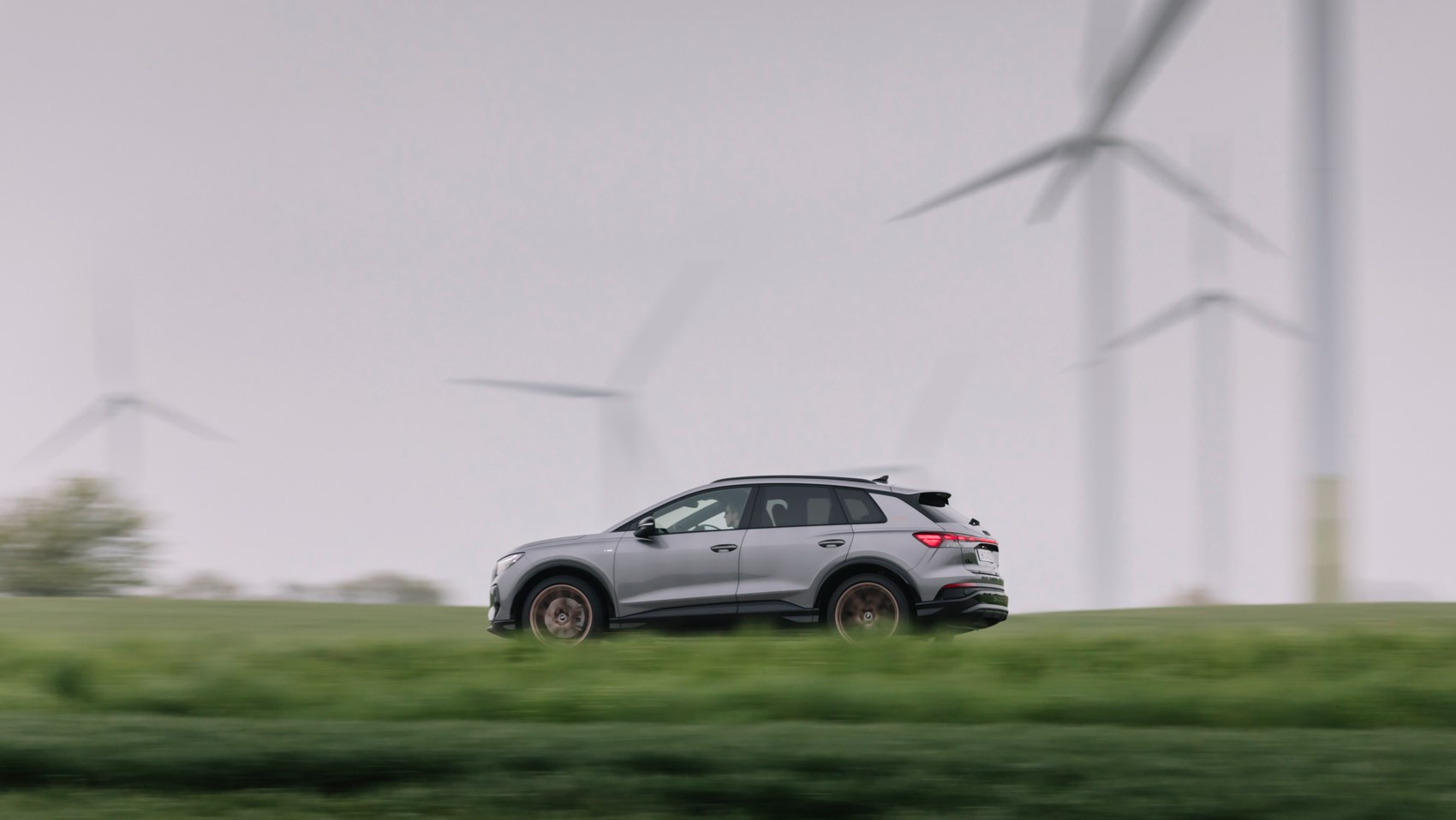
Our test car was shod with optional 235/255 21 tyres, the ride was (with the adjustable dampers locked in Comfort) commendably supple even at low speed and over sudden transverse disturbances, while the steering is nicely progressive. The Drive Select system invites you to set the helm, both motors and the torque distribution in your choice of Comfort, Auto, Efficiency, Individual or Dynamic modes, but is in effect more of a gimmick than a real bonus with the exception of the Range and Efficiency programmes, which seriously curb consumption by limiting maximum speed.
Any efficiency tech?
Well, there's Audi's Predictive Efficiency Assistant. It's been on Audi models from the moment the current A6 arrived, and naturally evolved for the electric age. It monitors the real-time traffic flow and road signs via its sat-nav connection.
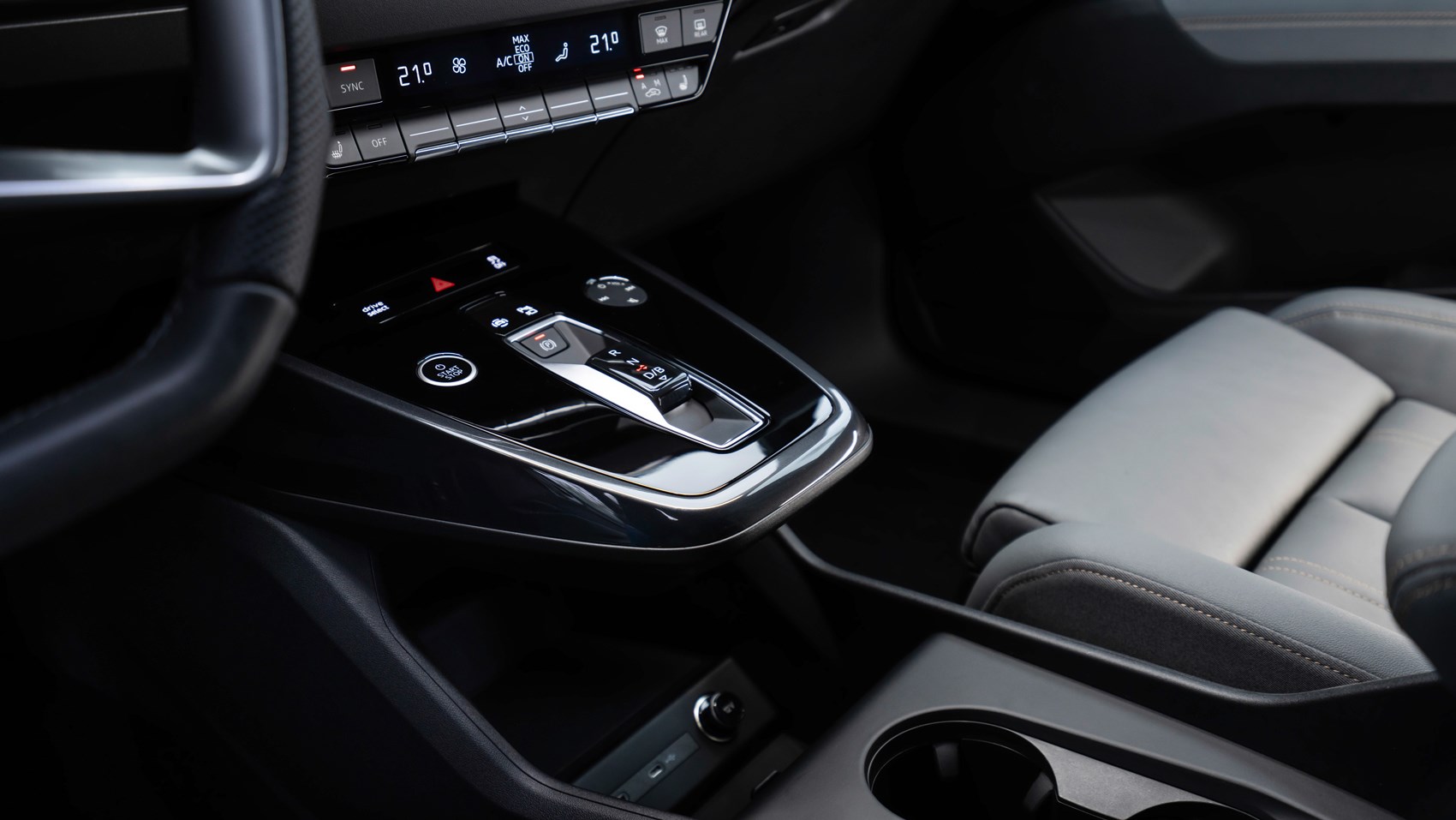
Stick the gearlever (or is it more of a nodule?) in B and the Q4 will automatically recuperate with up to 145kW, which practically puts the brakes on the dole. In D for Drive, paddles (standard on Edition 1 and Vorsprung versions, optional on Sport and S-line) make it easy to select one of three regeneration stages, or to choose the overly cautious automatic programme.
Audi Q4 e-Tron: verdict
The Q4 e-Tron hits the trendy new targets of EV ownership (range over power, charging speed over top speed) with aplomb. Its footprint is small enough for it to pass as planet-friendly urbanite and to calm the social acceptance watchdogs. At the same time, it can be customised to the taste and budget of a rich person ready to jump from the combustible past to the electrified future.
Like it or not, but cars like this are the new normal.
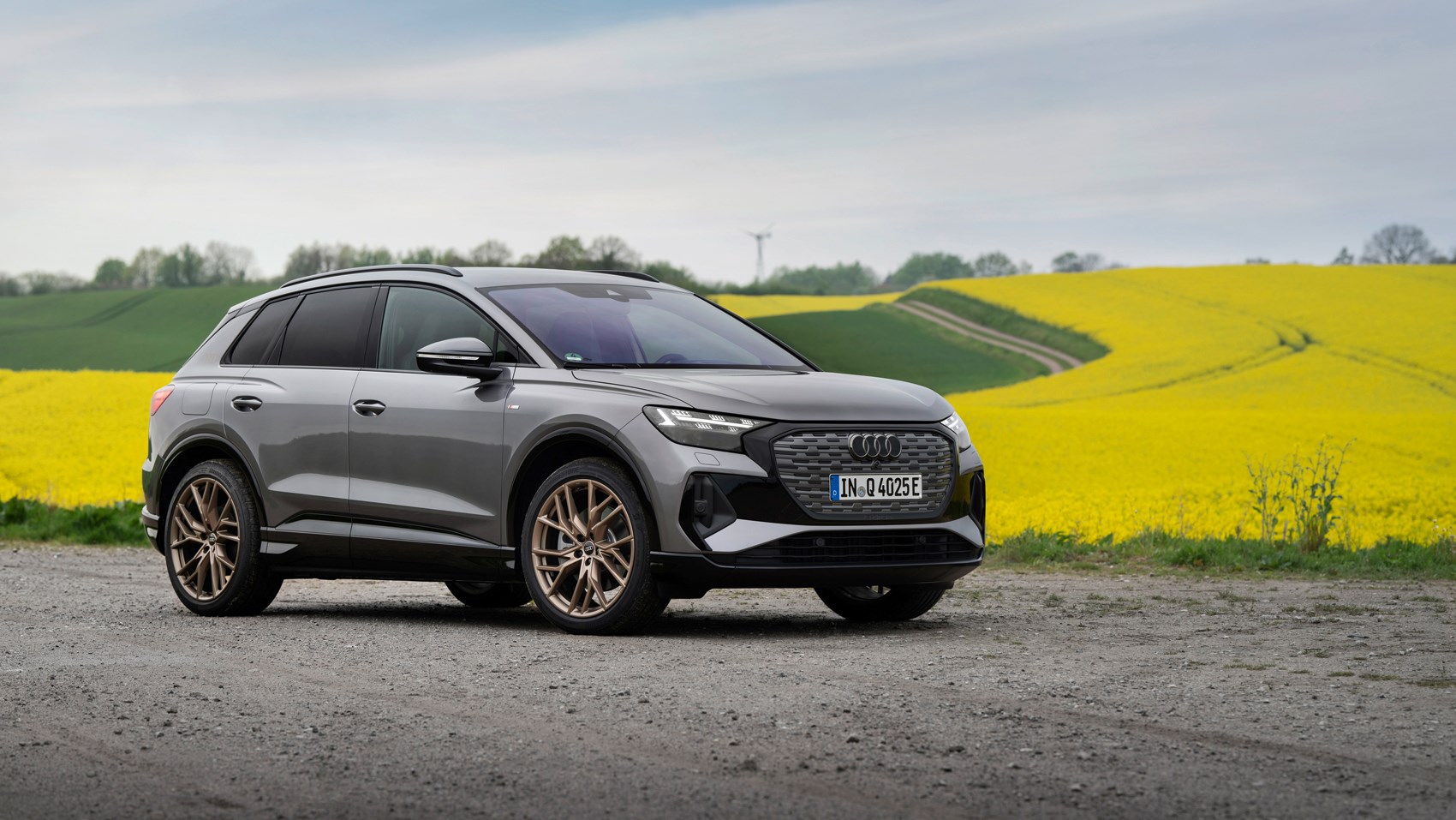
(carmagazine.co.uk)

